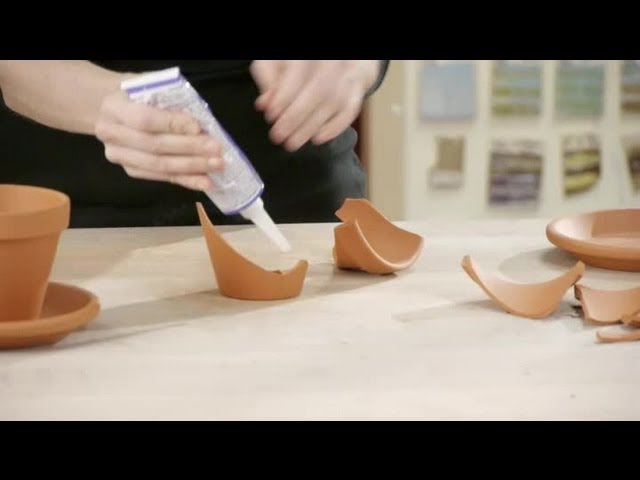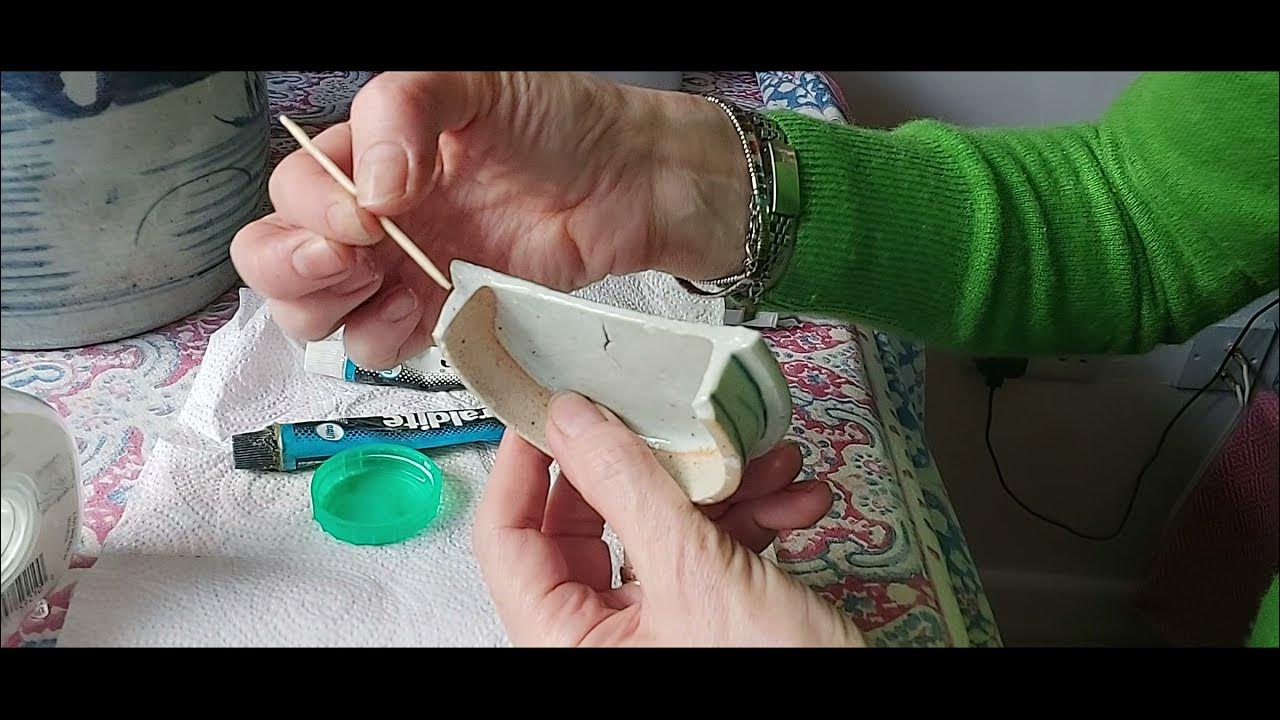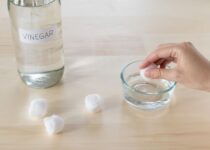How to Glue Pottery
A good day can quickly turn bad if you have broken pottery. It’s not fun to pick up pieces from a project you once completed, whether it was a present you received or something you did yourself. It’s even more challenging to explain the situation to someone else when you are not who broke it. However, don’t worry! Your project can be fixed no matter what ceramic and pottery glue you use.
This blog post will discuss how to glue pottery. We will discuss how to select the correct type of glue and use it correctly. The glue is essential for maintaining and repairing pottery.

Structure of Pottery Product
Most pottery is made from clay that has been dried to a hard form. It is possible to glaze the product to protect its decoration and to make it more resistant to liquids such as water. Clay objects can be decorated with slips. Slip is a non-fired material that’s applied to create smoother surfaces.
Pottery products are fragile and can break easily. To fix pottery pieces, you will need glue. Pottery dates back to the Stone Age when people lit fires and let them burn until they were reduced to red-hot coals. You can use the ashes to glue by mixing them with water.
It is well known that in Ancient Egypt, the Egyptians used coniferous tars to glue pots or made bread out of beer and flour, which mimicked the natural adhesive properties (the enzymes found in raw yeast).
Many types of adhesives are available today, each with its own benefits and drawbacks.
What exactly is pottery glue?
As its name suggests, pottery glue is a strong adhesive that can be used to reassemble broken pottery. Different glues are available for different types of pottery (we’ll go into detail in the next section). Pottery glues can be highly effective and can repair broken pottery over time.
Pottery glues are a saver for several things, including repairing broken plates, cups, and bowls, repairing valuable antique pottery and souvenirs, or even fixing ceramic tiles in the bathroom or kitchen. The prices of pottery adhesives vary, but it is an inexpensive way to fix broken items instead of buying new ones.
How to Glue Pottery Together? Steps To Follow
Step 1: Gather materials
You will need a flat, clean surface, ceramic glue/epoxy, a toothpick, and duct tape or clamps to glue your pottery together. After gathering your materials, it’s time to move on to the next step.
Step 2 – Prepare the Surface
Prepare the surface of the pottery pieces you wish to glue together. It is essential to prepare the surface because this will determine the strength of the glue’s adhesion.
Sand the edges of each piece with fine-grit paper. Next, use a dampened cloth to wipe off any dust.
Step 3: Mix Adhesive
For this project, you’ll need two-part epoxy glue. Mix the two parts by the instructions provided by the manufacturer.
Use a toothpick after the glue has been mixed to apply the glue to the broken edges of the pottery. Apply the glue evenly to ensure that the pieces adhere well.
Step 4: Attach the Piece to the Surface
You’re almost done! Attaching your newly-glued piece to a surface is the last step. You can use your fingers to hold the small piece in place.
For larger pieces, you may need to use clamps. Allow the glue to dry completely before you move forward.
Step 5: Final touches
It’s now time to add some finishing touches. You can use fine-grit paper to smooth any visible rough edges where the glue has been applied.
Use a damp sponge to sand the surface of the ceramic lightly. Fill in any cracks or holes in your ceramic piece with epoxy putty.
Your pottery will look like new once you are finished!
How to Choose the Best Types of Glue for Ceramics
It’s frustrating to break a ceramic item in your home, but you can repair most of them with the right pieces and high-quality glue. It can be used to repair ceramic tiles and small broken items. Keeping specialized glues on hand is a good idea if you work to bond pottery together.

A Buyer’s Guide
-
Usage Purpose
The type of ceramic glue you buy will depend on your fixing product. Check the product description for the best glue to use. You should also consider the color of the object you intend to repair. If you want the glue joint visible, choose a clear ceramic glue or a glue that matches the color of your broken item.
-
Water-resistant
Superglues, on the other hand, are less water resistant. Check to see if the glue you buy is waterproof and if the item you are fixing will be washed or put in the dishwasher. You don’t want to spend hours gluing your favorite pots together only to find they dissolve at the slightest hint of water.
-
Food Safe
When shopping for ceramic adhesives, you should consider whether the product is food safe. Ceramic adhesives are often very potent and contain chemicals you may not want to use around food. Check the FDA stamp before you buy any ceramic adhesive. You’ll know that the ceramic adhesive you are considering is safe once you see the FDA approval stamp.
-
Form of the container
The type of container in which the ceramic adhesive is packaged will affect how easily it can be applied to the damaged item. Ceramic adhesives can be purchased with an adhesive tip to help you apply the adhesive to the correct area. Others come with brushes to allow you to control the placement of the adhesive. Avoid using an adhesive container that drips excessively. This will waste adhesive and could be harmful if the adhesive gets on your skin.
-
Price
The price of ceramic adhesives is always a factor to consider. Many cheap products are available on the market. Some of the better ceramic glues offer the best value for money. Before buying, read reviews and remember that the most expensive ceramic glue may not be the best.
-
Drying time
Ceramic adhesives will state how long the glue should dry. Superglues and epoxy adhesives require more drying time. Still, their different compositions can affect how long it takes to dry. Knowing the drying time when you need to fix something quickly is useful. The owner may not even be aware!
-
While drying, the Opacity is heightened.
It is essential to know how the final product looks. Certain ceramic glues change color as they dry. You should be particularly aware of how the epoxy adhesive will look after drying. You can check the product specifications to see the glue’s color when it’s ready. This will help you decide if the glue is suitable for your needs.
What are the different types of pottery adhesives?
There are actually two types of ceramic adhesives: superglues and epoxies. Learn more about these two below or in this amazing comparison post:
-
Epoxies
Epoxy glues consist of two essential ingredients: resin and hardener. You can mix these two compounds together to make a powerful adhesive. You will notice that the stronger the adhesive is, the more hardener is added to the compound. However, it will take longer to harden. It is waterproof. This makes epoxy glue a great ceramic glue for bonding ceramics that will be washed. This glue has a very noticeable firmness.
If you only glue something once, it will remain in place (so be careful not to spill it!). The manufacturers provide the basic components already measured to make an epoxy adhesive that is durable and efficient. When repairing damaged ceramics, epoxy adhesives may be more visible. (You can get epoxy adhesives in colors that match the ceramics you are fixing.) Epoxy glue can also withstand high pressure and is waterproof.
Epoxy glue can also fill in gaps if ceramic pieces are not perfectly matched.
-
Super glues
Superglues are easier to use than epoxy glues because you don’t need to prepare them yourself. These glues are made of cyanide-cyanoacrylate, which hardens when exposed to atmospheric humidity. Super glue is an excellent option for a quick application. It can be applied directly from the bottle and dries quickly. If you need to fix things quickly after a disaster, super glue can be a tremendous ceramic adhesive.
Superglue has the disadvantage of not being as strong as epoxy glue. It also dissolves quickly, making it less water resistant if you’re fixing items regularly cleaned in a dishwasher. Superglue cannot fill in gaps. This type of glue cannot fill in gaps if the pieces are not all broken.

Frequently Asked Questions
-
Can broken ceramic pieces be glued back together?
If the pottery pieces are not too badly broken, it is possible to glue them together. You can use either white or black craft adhesive in this situation. Still, you need to consider how porous the ceramic piece is. If your material is porous, you may need to use epoxy glue for extra strength. Keep some on hand in case this happens!
-
Can Gorilla Glue be used to repair ceramics?
Yes. The brand Gorilla Super Glue is most commonly recommended for ceramic repairs.
-
How do you glue pottery back together?
Spread epoxy or glue along the edges of the broken pieces, then press them together until they are firmly secured. Let the glue dry.

Being associated with art and craft field since decades as a hobbyist and life long learner has given me an opportunity to learn many new things related to art, craft, paints and pottery which i am trying to share with your guys on this website. I have expertise of being professional painter and potter for the last 20+ years
I have learned mind blowing cool tips and insights which makes me a person with ability to improvise and come up with creative ideas and solutions to make stunning and impeccable art pieces of all types which are adored by people across the globe on this website and other platform.


